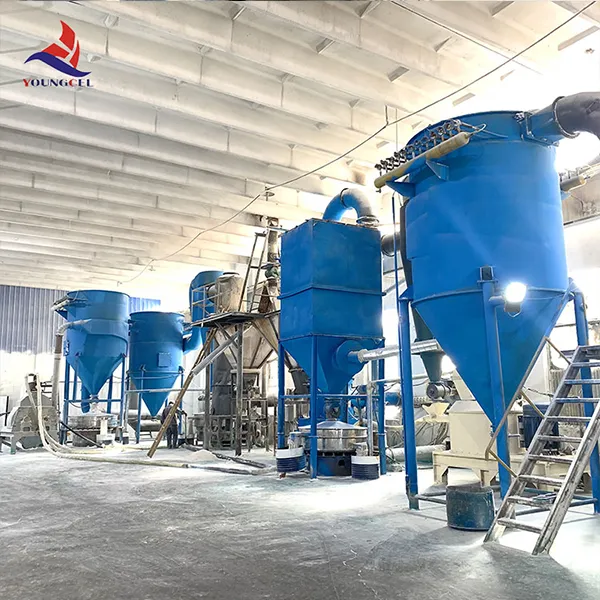Understanding Construction Adhesives Types, Applications, and Benefits
In the realm of construction and architecture, the importance of adhesive bonding cannot be overstated. Construction adhesives serve as a critical tool that aids in joining materials together, enabling the creation of sturdy, durable, and lasting structures. This article delves into the various types of construction adhesives, their applications, benefits, and considerations for their use.
Types of Construction Adhesives
Construction adhesives come in a variety of formulations, each designed to meet specific needs. Some of the most common types include
1. Polyurethane Adhesives Renowned for their strength and versatility, polyurethane adhesives bond well with various materials, including wood, metal, and concrete. They are waterproof and resistant to chemicals, making them ideal for both indoor and outdoor applications.
2. Acrylic Adhesives These adhesives are known for their rapid curing times and strong bond formulation. They can bond dissimilar materials and are particularly effective in woodworking and metalworking applications.
3. Epoxy Adhesives Comprising a resin and a hardener, epoxy adhesives offer exceptional strength and durability. They can withstand extreme temperatures and harsh environments, making them suitable for industrial applications and structural bonding.
4. Solvent-based Adhesives These traditional adhesives contain solvents that evaporate after application, resulting in a strong bond. They are commonly used for bonding plastics and rubber materials but may have environmental and health concerns due to the volatile organic compounds (VOCs) they release.
5. Water-based Adhesives With growing environmental awareness, water-based adhesives have gained popularity. They are less toxic and easier to clean up, making them suitable for various construction tasks, particularly in residential settings.
6. Hybrid Adhesives These combine the best properties of different adhesive types, offering flexibility, quick curing times, and strong adhesion for multi-material applications.
Applications of Construction Adhesives
Construction adhesives are used across a myriad of applications, including
- Flooring Installation Adhesives are essential for securing tiles, laminates, and hardwood flooring. They ensure that materials stay in place, reducing the risk of warping and movement.
construction adhesive

- Roofing and Decking Construction adhesives are used in roofing applications for bonding shingles and underlayment materials, enhancing waterproofing and insulation properties
.- Building Panels Adhesives are commonly used to bond wall panels and structural elements, providing additional strength while helping to reduce overall weight.
- Furniture Assembly In furniture construction, adhesives are vital for creating strong joints, especially in areas where mechanical fasteners might not be feasible.
- Window and Door Installation Adhesives help secure windows and doors into frames, enhancing energy efficiency by sealing gaps that could lead to air leaks.
Benefits of Using Construction Adhesives
The use of construction adhesives offers several advantages over traditional mechanical fastening methods
1. Increased Strength Adhesives can provide a more uniform distribution of stress across the bonded area, enhancing the overall strength of the joint.
2. Versatility Many adhesives can bond a wide range of materials, enabling builders to work with different surfaces without needing multiple types of fasteners.
3. Aesthetic Finish Adhesives allow for seamless joints that are less visible compared to screws or nails, contributing to a cleaner, more polished appearance.
4. Reduced Labor Adhesives often simplify the construction process, saving time and labor costs. They can also be applied quickly, allowing for faster project completion.
5. Flexibility Certain types of adhesives can accommodate slight movements in materials, making them ideal for structures where expansion and contraction might occur.
Conclusion
Construction adhesives are indispensable in modern construction and renovation projects. With various types available for specific applications, they offer durability, strength, and versatility. As technology advances, the development of safer, more efficient adhesives continues to enhance building practices. Whether you are a professional contractor or a DIY enthusiast, understanding the capabilities and proper use of construction adhesives is essential for achieving successful and long-lasting results in any project. By integrating these powerful bonding agents into your toolkit, you can unlock new possibilities in construction, ensuring quality and durability in every build.
-
Rdp Powder: Key Considerations for Wholesalers in the Building Materials IndustryNewsJul.08,2025
-
Key Considerations for Wholesalers: Navigating the World of Hpmc - Based ProductsNewsJul.08,2025
-
Hpmc Detergent: Key Considerations for WholesalersNewsJul.08,2025
-
Key Considerations for Wholesalers: China Hpmc For Tile Adhesive, Coating Additives, Concrete Additives, and MoreNewsJul.08,2025
-
Crucial Considerations for Wholesalers: Navigating the World of Construction MaterialsNewsJul.08,2025
-
Key Considerations for Wholesalers Sourcing Additive For Cement, Additive For Concrete, Additive For Putty from Additive Manufacturer Shijiazhuang Gaocheng District Yongfeng Cellulose Co., Ltd.NewsJul.08,2025




